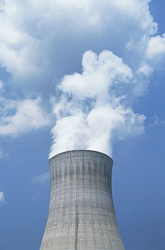Assessing radioactive risks
According to the inventory taken, there is considerable difference in terms of amount and type of TENORM industrial activities across countries even between factories and sites from the same branch. Regarding occupational exposure, for example, the highest source in Germany came from oil and gas exploitation for those working at drilling platforms and storage sites. In the Czech Republic, however, the highest rate of occupational exposure occurred within the titanium pigment industry and resulted from dust inhalation arising from pre-processing of limonite ore. Miners in underground hard coal mines in Poland suffered the highest rate of occupational exposure. Besides the occurring occupational hazards, the general public is also at risk. For example, untreated pit water discharge from hard coal mines contaminates the stay at river banks in Germany. In Romania, the level of stay at red sludge dumps posed a risk to the general public as well. TENORM occurred in 31of the 43 selected industrial branches especially in steel production and oil refineries. This mainly has to do with decommissioning older factories, decreases in industrial capacity, change in economic structure, implementation of advanced low or no waste technologies and/or the use of imported intermediate products instead of raw materials. With the application of this study in the future, regulation and mitigation methods could be further improved. Furthermore it will be made accessible through the Internet via a GIS database and may be developed as a guide for meeting EU requirement standards.







